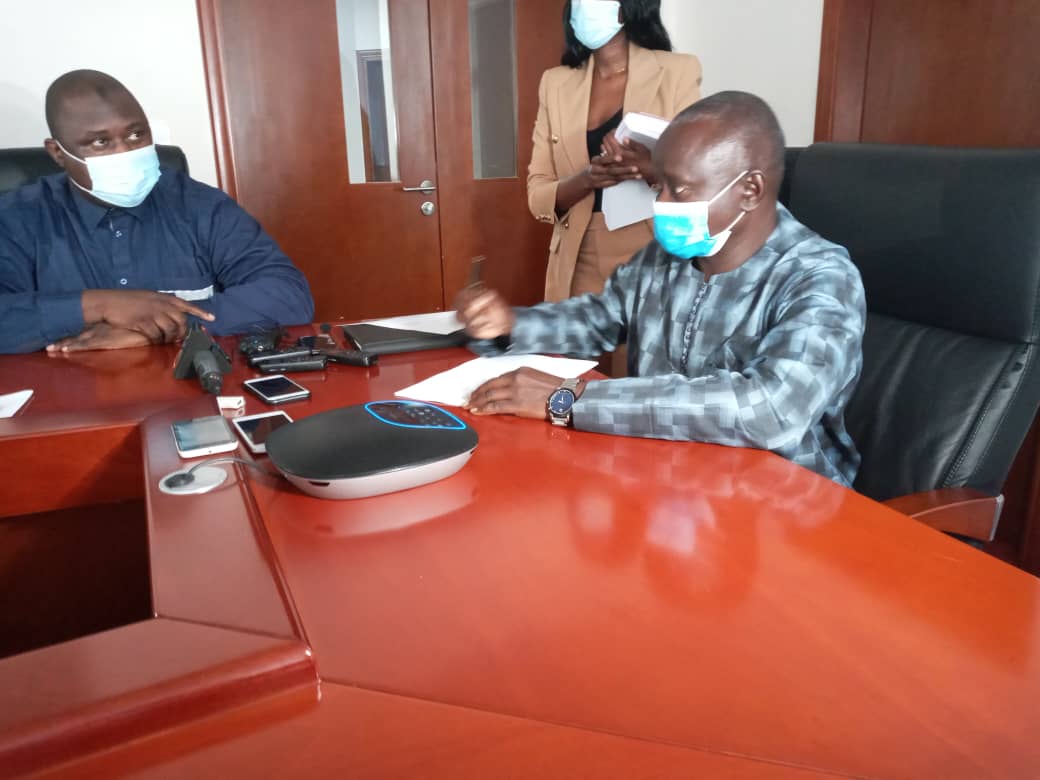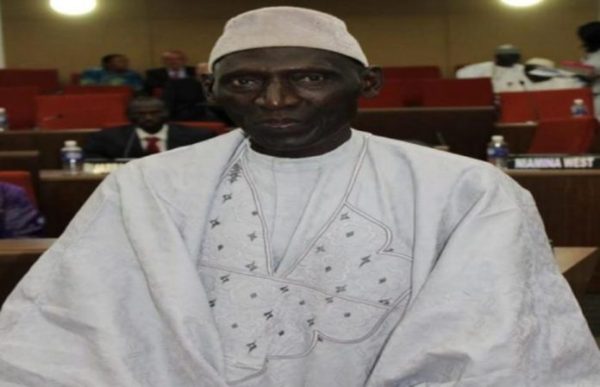Welcome to Destination Gambia, Place To Enjoy Ninki Nanka Trail Trip
By Yunus S Saliu
Without any mistake it is obvious not hard to know why The Gambia known as The Smiling Coast of Africa is one of the sought-after destinations for tour operators, tourists and visitors that have taste and craving for new adventures during their holidays.
Destination Gambia has perfect combination when it comes to tourism especially its good weather condition, the irresistible 3s – Sea, Sand and Sun with good palatable accommodation and endless hospitality. Not only this, the unending beaches in the tourism development area (TDA), the untapped River Gambia itself with the irresistible sparkling blue waters all added to different sceneries both in the cities and hinterlands. In addition to this are the enormous traditions with attractive cultures both tangible and intangible cultural heritages and more that will give you a long life experience on any of your visit to the destination.
All this and more can be enjoyed during your holiday in The Smiling Coast of Africa, in particular with the Ninki Nanka Trail (NNT) trip package.
Ninki Nanka Trail trip package is new developed tourism products that will broad your upriver and Community-Based Tourism (CBT) experience, and it is a combination of river and overland excursion to see and visit exotic places in the destination.
With Ninki Nanka Trail, you will be able to explore communities, different products with investment opportunities. Your visit to CBT villages will expose you to fascinating insights local life, history, arts and different cultures of The Gambia people and their ways of living in peace, harmony and in tranquil environments, as your NNT trip will be led by enthusiastic and experienced tour guides that take your safety and enjoyment a priority.
Your Ninki Nanka adventure can take up from The Gambia capital city, Banjul and it can as well start from your hotel doorstep in the Greater Banjul Area where you will say goodbye to the hustling and bustling of the city life as you will welcome by ever smiling trip guide who will give you the breakdown of your journey from begin to end.
The trip guide will introduce you to different tour guides as the journey continue and will do everything to make all tourists onboard comfortable on each journey and days, as your trip package last. Ninki Nanka Trail package include full package of river trip with 7 nights, light package river trip of 1 night and 2 days, and the North Bank experience overland is 2 nights 3 days and through South Bank experience overland is 2 nights 3 days.
Been lucky as one of the culture, tour and travel writers onboard the Ninki Nanka Trail trip, our journey starts from the Greater Banjul Area onboard a coach, driving by an experienced driver, heading to Ndemban village, a Jola community (one of the tribes in The Gambia); there comes a voice of the trip guide welcoming tourists onboard. He announced his name, duty and said “we are now heading to Ndemban village. It is a Jola community where you will tour the village, visit the Ndemban ‘homestays’ among other places, enjoy the Jola culture, hospitality and cultural products of this beautiful community.”
From the point of announcement things started looking different from the world we left behind the flurry of people in the city, the scenery, weather, and now the intermittent hands waves from people at roadsides with the special word ‘Toubab, Toubab (a name for the tourists especially white tourists). While the trip guide never forget to tell the story of the Ninki Nanka.
According to the guide’s narration, the legend Ninki Nanka dragon is a ‘mythical dragon residing in the creeks of the River Gambia.’ Ninki Nanka, he said, can be a benevolent dragon bringing great fortune and can also be a malevolent dragon bringing danger and even death.
Notwithstanding, the trail is a responsible product that aims to disperse economic benefit to rural areas, and to create opportunities for tourism to continue into the shoulder ‘Green’/Tropical Season.’
Ndemban Village

At Ndemban village the trip guide will hand over visitors to local tour guide waiting with smiley face to take you on a tour of the village and tell you the history with other stories attach to the community, answer your questions without any exasperation.
Ndemban has 33 households and it remains one of the tranquil villages with clean environment in West Coast Region with 24-hour non-stop e-Water. The culture, tour and travel writers including me toured the nook and crane of the community and visited different places. The first place of visit as tradition of The Gambia demands is to pay homage to the Alkalo (village head) of any community you visit. A visit to the home of the 85-year-old Alkalo (village head) called Janko Gibba to know the history of the establishment of the village was with fanfare from the villagers. Farming, fishing, animal husbandry, horticulture are their main occupation and source of incomes.
Among places to visit in Ndemban community include the community only school; blacksmith smithy; women horticultural garden; oyster women farmers; women garden where you can learn the procedures of refining local salt; soothsayer corner; skills center where women produce tie and dye and batik with local materials by using onions, sand-stone locally called ‘keu’, mahogany and so on; plus other handicrafts. In any part of the day but with advised from your tour guide, you can enjoy boat cruising, while in the evening you will have opportunity to grace Jola cultural activities while a night or more at the Ndemban homestays will give you everlasting experience of the life of the people of the community.
Among other things to enjoy in Ndemban village is local cuisine and drinks which include Baobab juice, wonjo juice.
A visit to Tabanani village

Journey to Tabanani from Ndemban village is overland. Tabanani village located in Central River Region (CRR) is a Madinka community named after fruits. In Madinka language, the word ‘taba’ means fruit while the word ‘nani’ stands for number four. These two words were combined to have ‘tabanani’ meaning four fruits.
According to oral narration, prior the settlement, there was a hunter called Foday Karr Ceesay who was moving with a dog. The hunter was observing the dog to know where it will feel more comfortable around the area during his search for land to do farming and other agricultural activities. The dog moved round and found four different fruit trees in the area and the environment was more conducive and relaxing for the dog and Foday Karr Ceesay, the hunter, who was able to identify the place and informed his brother in Brikama Bah (another settlement).
As a result, Foday Karr Ceesay, the brother and others including the dog migrated to the place to settle and named it Tabanani.
In Tabanani community, you will learn about Madinka culture, tradition, food which include freshly made vegetable domoda – peanut butter sauce and drinks – baobab, wonjo juice and palm wine.
Among other activities to do in the community include listening and watching cultural performance with narration of the Kanyeleng from the Kanyeleng Group, Kankurang dance, visiting the Alkalo of Tabanani, yard of Ebrima Sanyang who makes ‘taafia’ (local hand fan) and among others.
Tour of Janjangbureh, a historical Island
Commencing a tour on this historical island Janjangbureh, the first point of call for any visitors is the Janjangbureh Visitor and Information Centre, a place you will be welcomed by the YEP trained active youth guides.
Janjangbureh is one of the most historical islands in The Gambia, an island of history and event where every minute spent is a moving and memorable one as the knowledge and sight will last in one’s life time.
Its culture and tradition formed the historical value of the island, which made it a household name in The Gambia and beyond. It is an island evolving from a mere sandbank made out of alluvial river deposits.
The tour guide explained that the island developed into a wooded environment inhabited by wild creatures and numerous species of birds and reptiles. Before it assumed its present names, early European and Luso, African traders of 16th and 17th centuries, originally called it Leman Island.
According to history of settlement, a structure found in the famous Freedom Tree Monument, a Triangle Park in the island located close to the slave house and slave market – in the island, “on April 14, 1823, the Island was ceded in a treaty signed by Major Grant and the King of Kataba, in exchange for an annual payment. On the same day, Grant took formal possession of the Island and built a fort.
On 30th April same year, two cannons were mounted on the bastions, the British flag hoisted and the royal salute was fired. The settlement was named after King George IV (1820-1830) and the Island was renamed after Sir Charles McCarthy, Governor of British West African Possession (1814-1824).”
This island occupies about 1/6 of the 43.2km square land area popularly called McCarthy, Georgetown or Janjanbureh, its present name. However, the various names appeal to specific groups of people that visit the Island.
Places to visit in Janjangbureh include Kankunrang Museum; Nyankusita tree known as Sacred Baobab Tree; Janjangbureh market, slave house and market, freedom tree monument; wooden house; silver smith smithy among other places. Some of the interesting activities include biking, kayaking, craft group hands experience.
Jamali experience
Jamali is a Fula community where visitors are welcoming to the village with Fulani traditional salute by the Fulani Ritti Group. Activities in Jamali community include visit to the Alkalo’s compound to listen to some stories, tasting ‘gossi gerteh’ known pudding rice; visiting wood carver, village organic garden and as well tour all the seven communities in Jamali villages.

Jajari Canoe Tour – Ninki Nanka Spotting

This is one of the main highlights of the Ninki Nanka Trail. It is the moment to listen to more stories about the Ninki Nanka, the legend dragon living in the creeks. As you are watching out for the legend dragon, so the chirp, whistle and sight of birds will take over your attention. There are over 550 species of birds for bird watching enthusiasts in the destination.
Kuntaur Boat Tour to Chimpanzee Rehabilitation Facility

Boat tour is among the highlights of the Ninki Nanka Trail trip. You will be guided through the river and estuaries where you may have an up-close but safe view of chimpanzees, baboons, red colobus monkeys, hippos, crocodiles, manatees.
Meanwhile, Chimpanzees Rehabilitation Center commonly known as Baboon Islands was established in 1979 and is home to the Chimpanzee Rehabilitation Project (CRP).
At the Chimpanzee Rehabilitation Facility there are six islands and out of them only three have chimps that’s from the Chimpanzees Rehabilitation Center to Kuntaur. But in Baboon Island, it is always an unforgettable experience!




